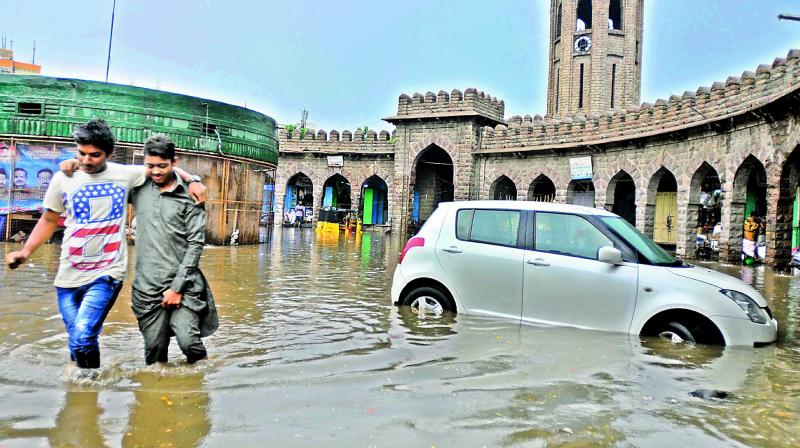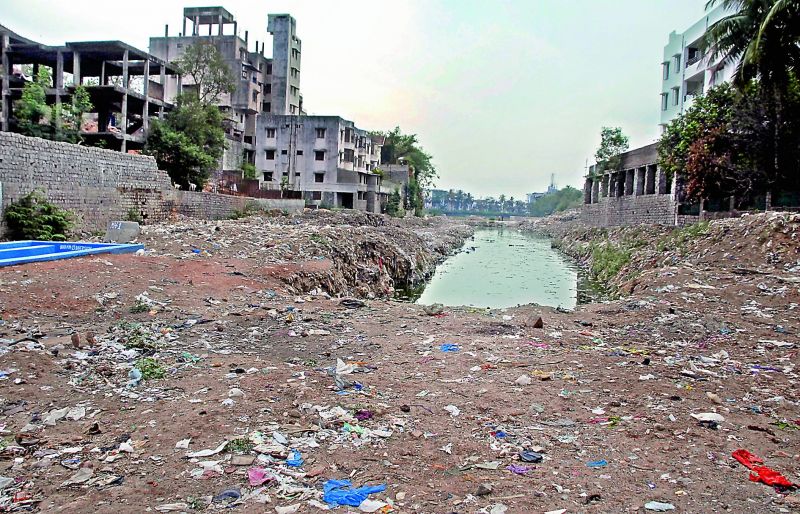Hyderabad: Water all over, ground table's still parched

Hyderabad: In case you were wondering, where does all the rain water go every monsoon? The answer is, it goes into the city’s polluted lake and nalas, after waterlogging the roads and bringing the city to a halt for hours, of course. The reason: the storm city’s water drain network is unscientific and does not channel the water into the ground table. Nor are there harvesting pits or tanks.
It’s also why we face urban flooding, adding to the woe created by the eyewash desilting and storm water drain remodelling that is carried out every year.
 Water rain water collected in a nala which is used for duming garbage.
Water rain water collected in a nala which is used for duming garbage.
The GHMC this financial year has spent Rs 27 crore on monsoon preparedness towards road repairs, de-silting of nalas and cleaning of storm water drains. The contractors manipulated the quantum of silt removed, and the number of trips they made to dispose of the silt. This way they inflated fuel and vehicle charges.
A permanent solution to inundated roads is building a wide storm water drain network, running parallel to the road, one that would have outlets into pits that connect to the ground water table.
The GHMC has been ignoring two major project reports, one by Kirloskar Consultants which had prepared a masterplan for the core city, and another, a more comprehensive one on a micro-level drain network by Voyants Solutions. Large storm water drains have been built at Kukatpally and Balkapur, as well as at Yellareddyguda, Banjara Hills, Yousufguda, Kalasiguda, Nagamaiahkunta, Erramanzil, Dandu Mansion, Gandhinagar, Indira Park, Musheerabad and Picket.
A senior officer of the Greater Hyderabad Municipal Corporation on condition of anonymity revealed, “A total revamp of the storm water drains would cost more than Rs 7,000 crore, of which not even Rs 1000 crore has been spent. Every year, GHMC calls for tenders to desilt nalas, the contractors are supposed to first weigh the silt and then dispose of it. The 842 encroachments on drains have not been touched due to pressure from certain quarters. Non-availability of clear stretches, contractors revising flood period estimates to calculate the widths and depths needed hold up works... There are issues with annual desilting, too, and contractors playing truant for a while refusing to transport silt, are the primary reasons for the poor state of storm water drains.”
The Rs. 1.8 crore ‘silt scam’, unearthed in the GHMC is just the tip of an iceberg. The audit was conducted in the central zone only, where 27 contractors and 12 engineers were booked for producing fake bills. If it were done across four other zones, the scam’s true proportions would have been exposed. But what the audit didn’t reveal, the nine-cm pre-monsoon rain on Thursday morning, which caused a nightmare, with waterlogging on several thoroughfares, and sewers and storm water drains overflowing, did.

